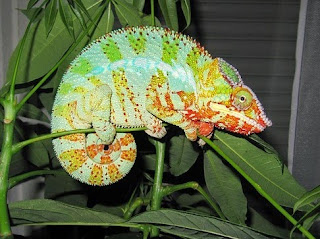The Marvel of Chameleon Vision
The 1981 remake of the song "Bette Davis Eyes" was a huge hit, but this child failed to see what was special about them. Could she move each one independently? Mayhaps a rewrite about someone who "has chameleon eyes" would be interesting.
We have examined the most obvious trait of chameleons before, the ability to change color. It seems their vision has been underrated, which presents problems to evolution. No other land animal has the independent eye motion which still makes sense because of the brain's intricacies. What we have here is yet another example of the Master Engineer's work.
When discussing alleged facts by evolutionists, likely, probably, scientists think, and other terms are used to dodge the issues but still promote their faith. In this case, discussing how the eyes and vision of chameleons operate practically require such words — the reptiles are not talking.
 |
| Chameleon on a branch, Pixabay / Shilona |
Most vertebrate animals have their eyes fixed in the eye sockets and cannot move them independently. As in humans, the images of both eyes are likely integrated by the visual cortex of the brain into a single unified visual field. Those animals with the eyes in lateral position have a monocular area of peripheral vision left and right, and a broad blind spot in front and the back of the head, which is likely integrated into a wide-angle view to detect predators. Some animals, especially predators and primates, have a more or less overlapping field of view in front of the head with binocular (stereoscopic) vision.
A qualifier before the link: In other places, this author has indicated belief in deep time and hinted at evolution. Here, he does nothing of the kind. To keep reading, visit "Chameleon Vision — A Unique Marvel of Design."